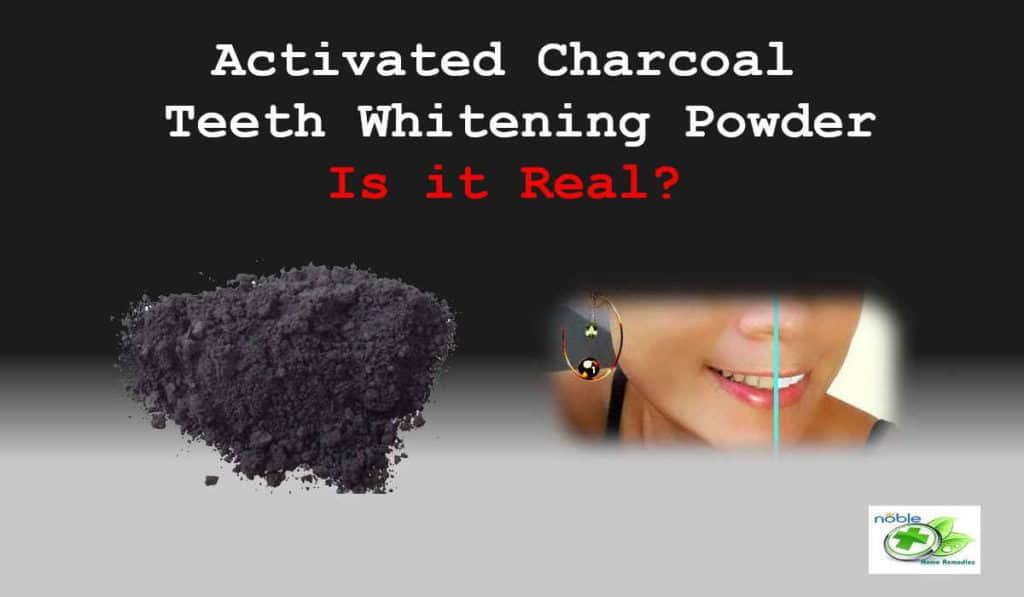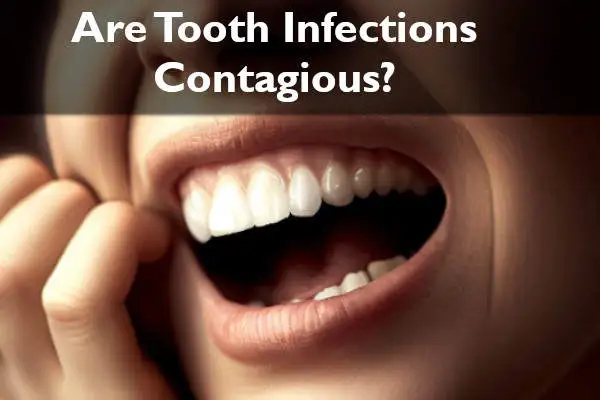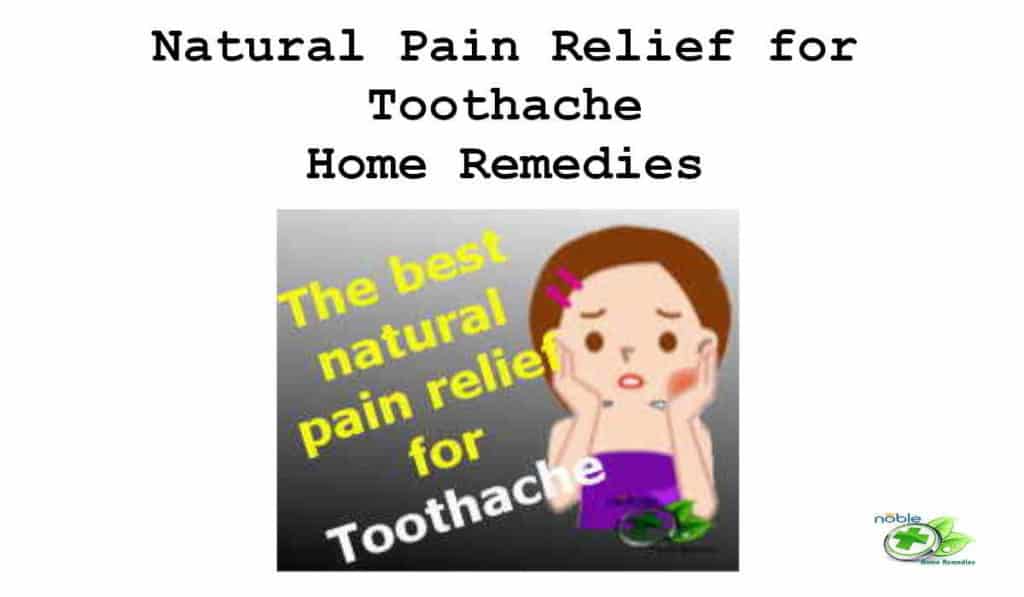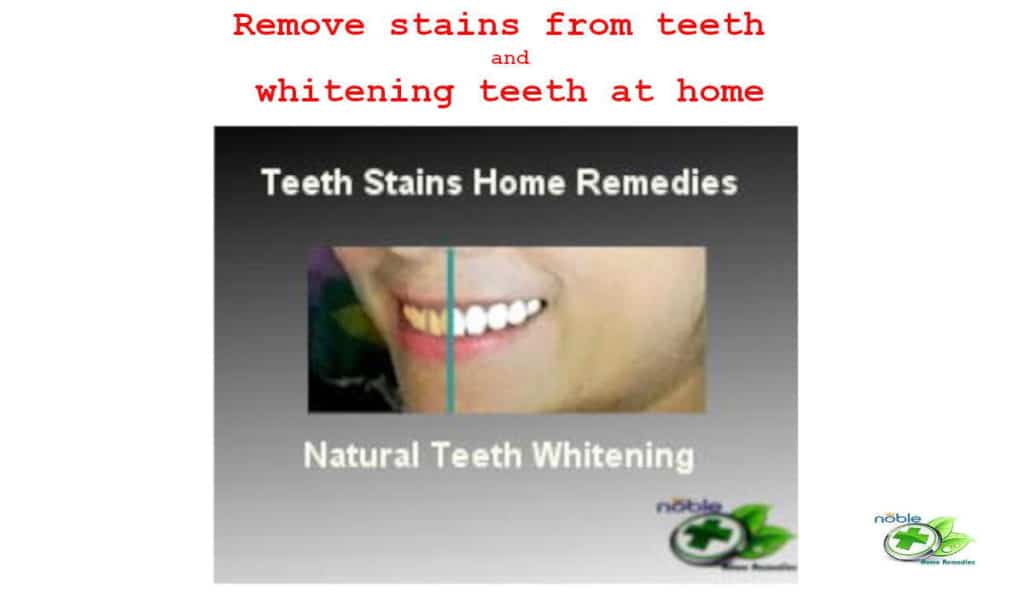Brighten Your Smile: The Ultimate Guide to Teeth Whitening at Home
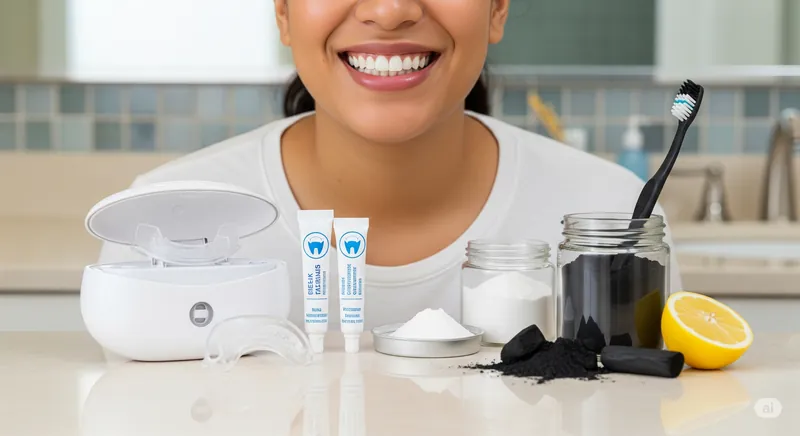
Embarking on a journey to a brighter, more confident smile often leads us to consider teeth whitening at home. Perhaps you’ve noticed your once-gleaming smile has lost some of its sparkle, appearing dull, discolored, or even a bit yellow. You’re not alone in this; many factors can contribute to teeth losing their luster, from everyday habits to natural aging.
The good news is that achieving a noticeably brighter smile doesn’t always require a trip to the dentist. There’s a wide array of effective, cost-effective, and easy-to-use at-home teeth whitening options available, ranging from time-honored natural remedies to advanced over-the-counter products. These products often work by using chemical or abrasive agents to lighten or remove stains, making your teeth appear whiter.
However, it’s important to approach teeth whitening at home with a clear understanding that results can vary, from subtle improvements to seriously sparkling effects. While many methods promise to brighten your smile, it’s crucial to understand how they work, their potential risks, and if they’re suitable for your specific dental needs, especially if you have sensitive teeth. Your comfort and safety are paramount in this process. Let’s explore the world of at-home teeth whitening together, uncovering the secrets to a dazzling smile right from the comfort of your own home.
Understanding Why Your Pearly Whites Fade

Before diving into solutions, it’s helpful to understand why our teeth change color in the first place. Our teeth, though strong, are constantly exposed to various elements that can cause discoloration. Here are some common culprits:
- Aging: Just like skin, teeth naturally yellow over time. The outer layer of enamel, which is naturally whitish, thins out as we age, revealing the yellowish-brown layer beneath called dentin.
- Food and Beverages: Many of our favorite everyday delights can leave their mark. Beverages like coffee, tea, red wine, and certain fruit juices (like dark berries) are well-known for their staining power due to compounds called chromogens. Even some pigmented foods can contribute to surface stains.
- Poor Oral Hygiene: If not cleaned regularly and thoroughly, plaque, a sticky film of bacteria, can build up on tooth surfaces and cause them to appear yellow. Consistent brushing and flossing are your first line of defense!
- Smoking and Tobacco Use: Tobacco products contain nicotine and tar, which are notorious for causing tough, stubborn stains that can be difficult to remove.
- Enamel Thinning: Beyond natural aging, acidic foods and drinks can erode the enamel layer. When enamel wears down, the more yellowish dentin becomes more visible, making your teeth look darker. Gum disease can also contribute to enamel wear. Some individuals naturally have thinner enamel, which makes their teeth appear yellower.
- Medications and Trauma: Certain medications, such as some antihistamines, antipsychotics, and high blood pressure drugs, can cause tooth discoloration. Cancer treatments can also have this effect. Additionally, children who were exposed to specific antibiotics at a young age might experience tooth discoloration as adults. Dental trauma, like an injury to a tooth, can also lead to changes in color.
- Excessive Fluoride Consumption: While fluoride is beneficial for teeth, too much of it can lead to a condition called fluorosis, which can cause white or brown spots on teeth.
- Genetic Factors: Sometimes, the natural shade of your teeth is simply determined by your genes.
Prevention: Your First Step to a Brighter Smile
Understanding the causes of discoloration empowers you to take preventive measures. Regular and consistent oral hygiene is the most important step to prevent and reduce tooth yellowing. This includes:
- Brushing and Flossing Regularly: Brushing your teeth for two minutes, twice daily, with a soft-bristled toothbrush and flossing helps reduce bacteria, prevent plaque buildup, and remove surface stains. Don’t forget to clean around your gums and the backs of your teeth.
- Rinsing After Staining Foods/Drinks: If you enjoy coffee, tea, or red wine, try to rinse your mouth with water immediately after consuming them. This can help wash away staining agents before they set in. Drinking staining beverages with a straw can also help keep them from hitting your front teeth directly.
- Limiting Sugar Intake: A diet high in sugar supports the growth of bacteria that cause plaque and gingivitis, which can stain teeth. Cutting back on sugar is a sweet deal for your smile!
- Waiting to Brush After Acidic Foods/Drinks: Acids can temporarily soften your tooth enamel. If you’ve had acidic foods or drinks (like citrus fruits or soda), wait about 30 to 60 minutes before brushing. This gives your enamel time to re-harden, preventing it from being scrubbed away.
- Including Calcium-Rich Foods: Foods rich in calcium, such as milk, cheese, and broccoli, help strengthen your enamel, which can protect against erosion and keep your teeth looking whiter.
- Quitting Tobacco: Stopping smoking or using tobacco products significantly reduces the risk of tough nicotine stains, and also improves your overall oral health.
Natural & DIY Home Remedies for Teeth Whitening
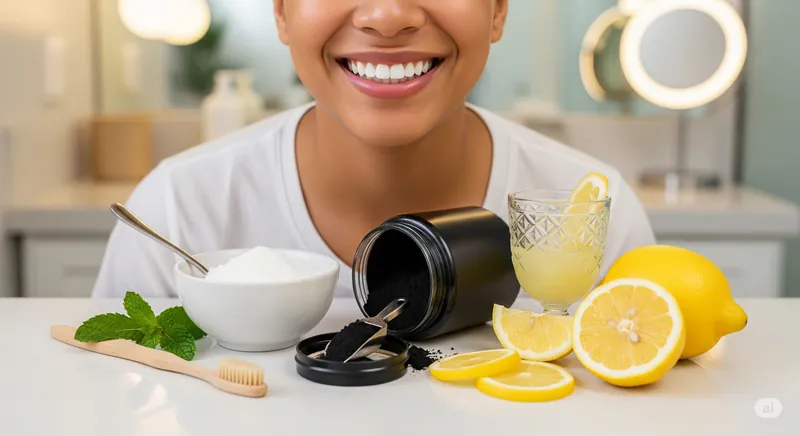
Many people prefer to start their teeth whitening at home journey with natural or DIY remedies, often seeking to avoid chemicals. It’s important to remember that while these methods are popular and anecdotal evidence abounds, some lack strong scientific backing for their direct whitening claims. Always proceed with caution, and observe how your teeth respond. If you experience any sensitivity or discomfort, it’s best to stop and consult a dental professional.
1. Oil Pulling
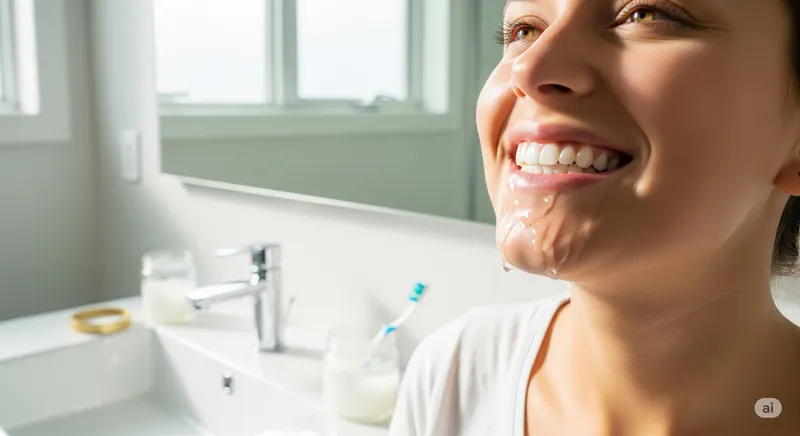
What it is: This is a traditional Indian remedy aimed at improving oral hygiene by helping to remove toxins and bacteria from your body and mouth. It involves swishing oil around your mouth to eliminate bacteria that can lead to plaque buildup and the yellowing of your teeth.
How to use:
- Put a tablespoon of coconut oil (or sesame oil or sunflower oil, traditionally used) in your mouth. If using coconut oil, it might be solid at room temperature, so you may need to wait a few seconds for it to melt.
- Swish the oil between your teeth and all over your mouth for at least 15 to 20 minutes.
- Spit out the coconut oil into a toilet or trash can to prevent it from solidifying and clogging your drain pipes.
- This procedure can be done daily.
Benefits: Oil pulling may help reduce the number of harmful bacteria in the mouth, preventing plaque buildup and gingivitis. Unlike some other methods, it doesn’t expose your teeth to acids or other ingredients that could erode your enamel, making it generally safe for daily use.
Scientific Evidence: While many individuals have reported brighter and whiter teeth after regular oil pulling, there is no strong scientific proof for its direct whitening capabilities. The American Dental Association (ADA) considers oil pulling “unconventional dentistry” and states there are no reliable scientific studies to show it whitens teeth. Still, it’s a practice many find beneficial for overall oral hygiene.
2. Baking Soda
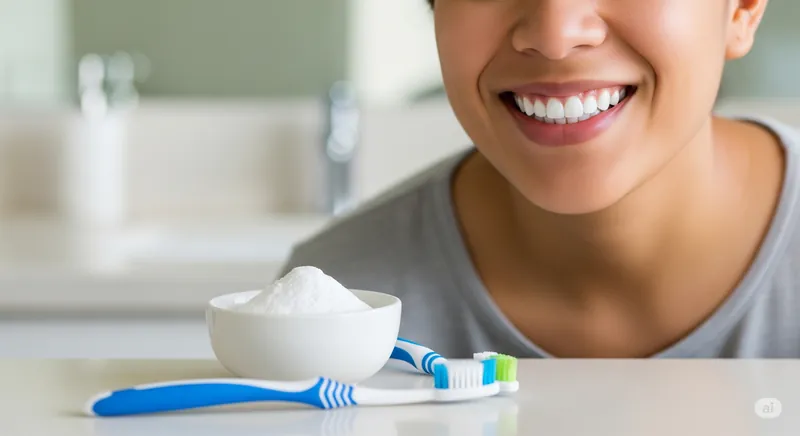
What it is: Baking soda, also known as sodium bicarbonate, is a commonly used ingredient in toothpaste due to its natural whitening properties. It’s a mild abrasive that can help gently scrub away surface stains from your teeth. Additionally, baking soda increases the alkalinity in your mouth, which can make it harder for harmful bacteria to grow.
How to use:
- Baking Soda and Water Paste:
- Mix 1 teaspoon (6 grams) of baking soda with 2 teaspoons (5 ml) of water in a small bowl to create a paste. You can also mix about a tablespoon of baking soda with about a tablespoon of water.
- Use this paste to brush your teeth for at least two minutes, just as you would with regular toothpaste.
- Gently brush all around your mouth, hitting each tooth, using circular motions. Avoid scrubbing too hard.
- Spit out the paste and rinse your mouth thoroughly with water or mouthwash.
- This can be done a few times per week. For everyday use, consider whitening toothpaste with baking soda already in it.
- Baking Soda with Hydrogen Peroxide Paste (for more intense whitening):
- Mix 1 tablespoon of baking soda with 2 tablespoons of 3% hydrogen peroxide in a small bowl. (Note: Another source suggests combining 2 teaspoons (10 ml) of hydrogen peroxide with 1 teaspoon (6 grams) of baking soda). The solution may bubble and fizz as the ingredients combine.
- Apply the paste to your teeth with a soft-bristled toothbrush.
- Leave the paste on your teeth for one minute before rinsing. Be careful not to swallow the paste.
- This remedy shouldn’t become your daily go-to. Because both ingredients are abrasive, it’s recommended to use this home remedy for three to five days, and then wait three to six months before trying it again. Limit use to a few times per week to avoid eroding tooth enamel.
Benefits: Baking soda effectively helps scrub away surface stains and increases mouth alkalinity to inhibit bacteria.
Scientific Evidence: While you shouldn’t expect overnight results, studies indicate that toothpaste with baking soda as an ingredient significantly whitens teeth and is effective at removing stains. However, using baking soda alone or overusing it can be abrasive and potentially cause tooth sensitivity or damage to your enamel.
3. Hydrogen Peroxide (Diluted)
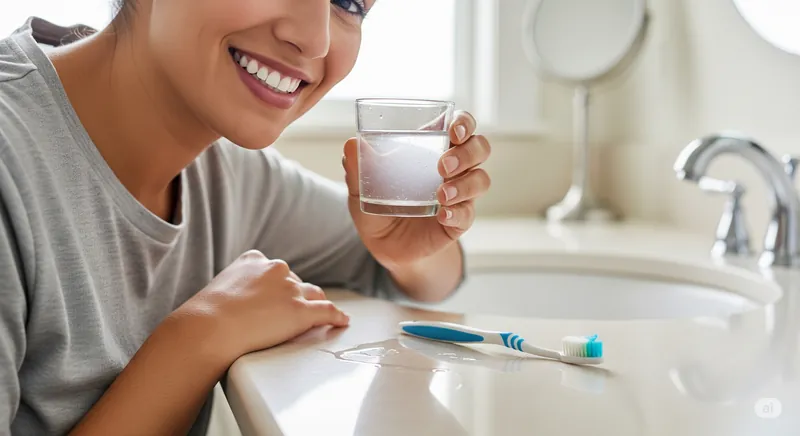
What it is: Hydrogen peroxide is a natural bleaching agent that also has properties to kill harmful bacteria in the mouth. For years, it has been used for wound disinfection due to its bacteria-killing abilities. Many commercial whitening products use hydrogen peroxide, often at higher concentrations than you would use at home.
How to use:
- As a Mouthwash: You can use a 1.5% or 3% solution as a mouthwash before brushing your teeth. To dilute a common 3% drugstore solution to 1.5%, mix equal parts peroxide and water. Typically, you would rinse your mouth for about 60 seconds, twice a day.
- Mixed with Baking Soda: As mentioned above, it can be combined with baking soda to make a teeth-brushing paste.
Benefits: Hydrogen peroxide can help whiten stained teeth and kill harmful bacteria.
Safety Concerns: While diluted concentrations appear safe, using strong concentrations or overusing hydrogen peroxide can lead to tooth sensitivity and gum irritation. It is crucial to only use hydrogen peroxide formulations specifically designed and meant for teeth whitening, and not the hydrogen peroxide found in your medicine cabinet, as these are formulated differently and carry significant risks if misused for dental care. There is also some concern that high doses may cause cancer, though this has not been proven.
4. Fruits and Vegetables

A diet rich in fruits and vegetables is beneficial for both your overall body health and your oral health. While they are not a substitute for regular brushing and flossing, some specific fruits and vegetables are believed to help with teeth whitening at home.
- Crunchy Produce: Chewing crunchy, raw fruits and vegetables like apples and celery can act as natural abrasives, helping to rub away plaque and dissolve surface stains by increasing saliva production in your mouth.
- Strawberries: Some proponents claim that the malic acid found in strawberries helps dissolve coffee, red wine, and tea stains on teeth. You can try mashing one or two strawberries and adding about a teaspoon of baking soda to create a paste. Using a children’s toothbrush (which helps get between teeth better), rub this mix on your teeth for five to seven minutes. After rinsing, floss out any lingering strawberry seeds. However, the acid in strawberries can cause enamel erosion if used too often, potentially making teeth more susceptible to staining. Use this remedy occasionally, not daily.
- Pineapple: Pineapple contains an enzyme called “bromelain,” which has been claimed to help remove stains. One study found that adding pineapple extract to hydrogen peroxide had a greater whitening effect than hydrogen peroxide alone. However, there is no evidence that simply eating pineapples produces the same direct whitening effect.
- Banana, Orange, or Lemon Peels: Some believe that rubbing the inside of mineral-rich fruit peels on your teeth (such as banana, orange, or lemon peels) can help break down stains and strengthen enamel. For a banana rub, after brushing and flossing, peel a ripe banana and rub a piece of the inside on your teeth for two minutes, then rinse and repeat before bed. Important Caution: While these claims exist, dentists generally do not recommend rubbing citrus fruits like lemons and oranges directly on your teeth. These fruits contain strong acids that can irreversibly erode your tooth enamel, potentially worsening tooth color and increasing sensitivity.
5. Other Less Common or Unproven Home Remedies
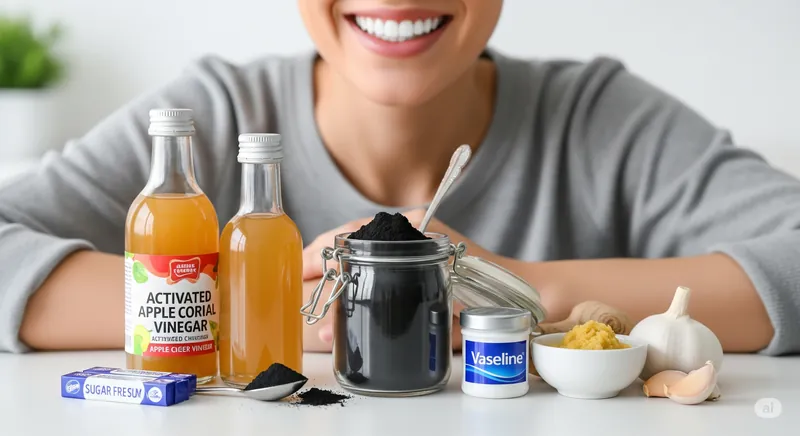
You might come across other suggestions for teeth whitening at home. While some of these are popular, many lack strong scientific evidence for their effectiveness and, in some cases, could potentially harm your teeth.
- Activated Charcoal: This has been a trendy ingredient, with claims that its porous granules bind bacteria and remove stains. However, research suggests that brushing with powdered charcoal is likely ineffective for whitening, and its abrasive nature can harm enamel.
- Apple Cider Vinegar: Some sources suggest diluted apple cider vinegar can boost your toothpaste’s stain-busting power. However, it is highly acidic and can weaken tooth enamel, potentially leading to increased tooth decay over time.
- Vaseline: Some people believe applying a thin layer of Vaseline (petroleum jelly) on exposed tooth surfaces after brushing can shield teeth from stains caused by pigmented foods and drinks, and even prevent lipstick from temporarily staining. However, Vaseline does not actively whiten teeth.
- Sugar-Free Gum: Chewing non-acidic, sugarless gum, especially those containing xylitol, can help increase saliva production in your mouth. This increased saliva helps reduce stain-causing food debris and inhibits bacterial growth, which can prevent discoloration and tooth decay, leading to a smoother, cleaner tooth surface. It doesn’t actively whiten but helps maintain whiteness.
- Ginger and Garlic Paste (Less Proven): One YouTube source suggests a specific remedy for removing “10 years of stains”. It involves crushing garlic and ginger, mixing with Himalayan pink salt, apple cider vinegar, and regular toothpaste. While this remedy is presented as very effective by the individual, it lacks scientific backing from other dental or health sources, and the acidity of apple cider vinegar could be a concern with frequent use.
- Recipe (from YouTube source, use with extreme caution and no scientific backing from other sources):
- Mash a small garlic clove and ½ teaspoon of peeled ginger.
- Add ¼ teaspoon of Himalayan pink salt.
- Add 1 teaspoon of apple cider vinegar.
- Mix in the same amount of your regular toothpaste that you use for daily brushing.
- Mix all ingredients thoroughly and use to brush your teeth.
- Note from source: This is described as a strong treatment to be used only when teeth appear yellow or stained, not continuously. Due to the lack of scientific support from authoritative sources and the potential for harm from acidic components, this specific remedy should be approached with extreme caution.
- Recipe (from YouTube source, use with extreme caution and no scientific backing from other sources):
A more common and widely shared YouTube-based “instant whitening” recipe that lacks scientific support from other sources uses lemon and baking soda with toothpaste:
- Recipe (from YouTube source, use with caution, no scientific backing from other sources):
- Squeeze the juice of half a lemon into a bowl.
- Add half a teaspoon of baking soda.
- Mix in a tablespoon of your regular toothpaste.
- Stir the ingredients thoroughly.
- Brush your teeth just as you would with your usual toothpaste.
- Note from source: Use this remedy only once a week or whenever needed to avoid overuse, as it is a strong natural treatment. Again, approach this with caution due to the acidity of the lemon and the abrasiveness of the baking soda.
Remember, for any DIY remedy, always be gentle and pay attention to how your teeth and gums feel. If you experience any pain or increased sensitivity, stop immediately.
Over-the-Counter (OTC) Teeth Whitening Products
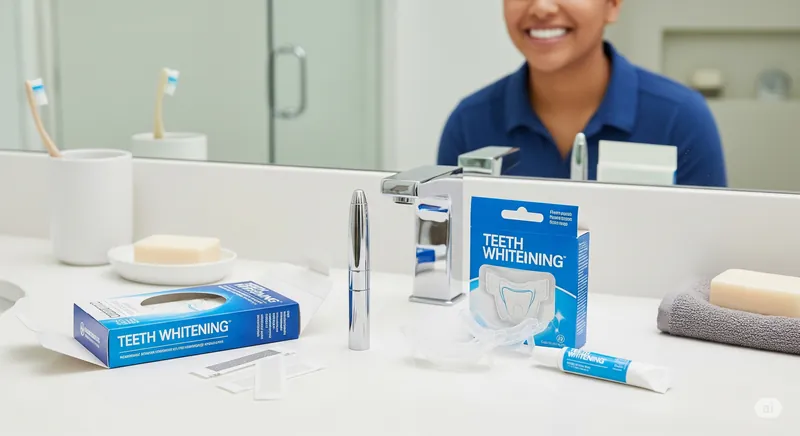
Beyond natural remedies, the market is brimming with over-the-counter (OTC) products for teeth whitening at home. These are typically more scientifically formulated to deliver noticeable results.
How They Work
Most OTC teeth whitening at home products rely on bleaching agents like hydrogen peroxide or carbamide peroxide (which breaks down into hydrogen peroxide). These powerful ingredients work at a molecular level to lighten stains by breaking down the compounds that cause discoloration.
For those with sensitive teeth, some products for teeth whitening at home use natural ingredients like coconut oil, aloe vera, xylitol, or hydroxyapatite, which are designed to be gentler while still offering whitening benefits.
Types of Products
The options for teeth whitening at home are plenty, designed to fit various preferences and lifestyles:
- Whitening Strips: These are thin, flexible plastic strips coated with a layer of whitening gel, often peroxide-based. Many testers find them easy to use, effective, and capable of producing visible whitening results in as little as two weeks. They adhere well to teeth and are discreet, allowing you to go about daily activities.
- Examples: Crest 3D White Daily Whitening Serum, Zimba Teeth Whitening Strips, Burst Teeth Whitening Strips, Up&Up 20-Day Ultra Vibrant Whitening Strips, Equate 18-Day Teeth Whitening Strips, Crest 3D Whitestrips Professional Effects Teeth Whitening Strips Kit, Lumineux Teeth Whitening Strips.
- Sensitivity-friendly options: Rembrandt 1 Week Whitening Kit, Burst Teeth Whitening Strips, Lumineux Teeth Whitening Strips, Crest 3DWhitestrips Sensitive + LED Light Teeth Whitening Kit.
- Gels & Serums (Brush-on): These are peroxide-based gels that you apply directly to the surface of your teeth using a small brush or applicator wand. They offer precise application and convenience, easily fitting into your routine.
- Example: Crest 3D White Daily Whitening Serum. This product whitened teeth by nearly 2.6 shades in 2 weeks in tests.
- LED Light Kits: These kits combine peroxide-based strips or gels with a wireless LED light device, which is intended to activate and accelerate the whitening process. While LED lights might speed up the process, they are only slightly more effective than strips or trays alone, and the active ingredients (peroxide) are what truly brighten the teeth. Some users find the devices cumbersome or require a longer daily time commitment.
- Examples: Crest 3D Whitestrips Professional Express White + Whitening Light Dental Whitening Kit, Oralgen NuPearl Natural Teeth Whitening System, Snow Diamond Series Wireless Teeth Whitening Kit, Crest Leave-on Teeth Whitening Kit with LED Light, Cali White White Teeth Whitening Kit.
- Whitening Toothpastes: These toothpastes typically contain mild abrasives, such as baking soda, silica, zirconium silicate, calcium carbonate, or calcium pyrophosphate, along with polishing agents. Their primary function is to remove surface stains, making your teeth appear whiter rather than changing their actual tooth color through bleaching. Some whitening toothpastes also include hydrogen peroxide for enhanced stain removal. They generally work more slowly than other whitening products.
- Examples: Colgate Optic White Renewal Teeth Whitening Toothpaste, ARM & HAMMER™ Advanced White™ Extreme Whitening Toothpaste, Sensodyne Extra Whitening toothpaste.
- Whitening Pens: These are convenient for touch-ups and allow you to apply a peroxide gel directly to your teeth using a brush head. While easy to use and discreet, they typically have a lower potency, which means less dramatic results compared to other at-home treatments.
- Examples: Colgate Optic White Overnight Teeth Whitening Pen, Moon Platinum Teeth Whitening Pen, Lumineux Bright² Pen.
- Whitening Rinses (Mouthwashes): These rinses contain hydrogen peroxide and can gradually whiten teeth. However, they generally take longer to show results, typically about 12 weeks for a slight change in tooth color. They can also help prevent new stains.
- Prefilled Whitening Trays (Over-the-Counter): These kits come with pre-filled mouthguards containing whitening gel that you fit over your teeth. While convenient, OTC trays may not fit perfectly, which can lead to the bleaching gel leaking and potentially causing blistering or irritation to your gums.
- Example: Opalescence Tooth Whitening Prefilled Trays.
Expected Results from At-Home Products
With consistent and correct use of at home teeth whitening products can lighten your teeth by one to four shades. You can typically expect to see visible results within one to two weeks for most products, and up to four weeks for whitening toothpastes. For those seeking more significant changes, some professional-level at-home kits can even help achieve specific, very light shades, like Vita B1.
Essential Tips for Safe and Effective At-Home Whitening
To ensure your teeth whitening at home journey is both successful and safe, keep these crucial tips in mind. Your dental health is the foundation of a beautiful smile!
- Prioritize Your Oral Health First: Before you begin any teeth whitening at home treatment, it’s incredibly important to address any existing dental issues. Things like gum disease or untreated cavities need to be resolved by a dental professional beforehand. Whitening products can aggravate these conditions, leading to pain or further complications. Think of it like preparing a canvas before painting – you want a smooth, healthy surface!
- Always Read and Follow Instructions Carefully: Each teeth whitening at home product comes with specific usage guidelines for how long and how often to use it. These instructions are there for your safety and to achieve the best results. Overuse or incorrect application can lead to unwanted side effects like increased sensitivity or even damage to your enamel. Don’t be tempted to “overdo it” for faster results – patience is key!
- Manage Tooth Sensitivity:
- It’s quite common to experience temporary tooth sensitivity or gum irritation when using whitening products. This is usually mild and subsides within a few days after stopping the treatment.
- If you’re prone to sensitivity, consider using toothpastes specifically designed for sensitive teeth, such as Sensodyne Extra Whitening or ARM & HAMMER™ Sensitive Toothpaste.
- Look for teeth whitening at home products that are formulated for sensitive teeth. These often contain lower concentrations of peroxide or sensitivity-friendly ingredients like carbamide peroxide, fluoride, xylitol, hydroxyapatite, potassium nitrate, aloe vera, coconut oil, sage, or lemon peel.
- If discomfort occurs, take a break from the whitening treatment for a day or two. A mild over-the-counter pain reliever like Tylenol or Advil can also help make you more comfortable until the sensitivity passes.
- Protect Your Enamel: Your tooth enamel is precious! Overuse of abrasive products (like pure baking soda mixtures applied too frequently) or acidic substances (like lemon juice) can wear down your enamel. When enamel erodes, the yellowish dentin underneath becomes more visible, ironically making your teeth look yellower and increasing sensitivity. Always be gentle and mindful of the product’s recommended usage.
- Adjust Dietary Habits During and After Whitening:
- During active teeth whitening at home treatment and for the first 24-48 hours afterward, your teeth are more susceptible to staining. It’s wise to avoid dark-staining substances such as red wine, cola, coffee, tea, dark berries (cherries, blueberries, strawberries), tobacco products, red sauces, mustard, ketchup, and soy sauce.
- Limit your sugar intake, as sugar encourages the growth of bacteria that form plaque, which can stain teeth.
- Incorporate calcium-rich foods like milk, cheese, and broccoli into your diet to help strengthen your enamel.
- If you consume acidic foods or drinks, wait 30 to 60 minutes before brushing your teeth. This allows your enamel, which can be temporarily softened by acids, to re-harden, preventing damage from brushing.
- Understand the Limitations of At-Home Whitening: It’s important to know that teeth whitening at home products only work on natural tooth enamel. They will not change the color of existing dental restorations such as tooth-colored fillings, crowns, veneers, implants, or bridges. Whitening your natural teeth might then lead to an uneven appearance, with your natural teeth becoming lighter than your artificial dental work. If you have a lot of dental work, discuss this with your dentist beforehand.
By keeping these tips in mind, you can maximize the effectiveness of your teeth whitening at home efforts while minimizing potential risks, paving the way for a healthier, brighter smile.
When to Consult a Dentist: Beyond At-Home Solutions

While teeth whitening at home offers convenient and effective options, there are times when professional dental guidance or treatment is the best path forward.
- Professional Guidance is Invaluable: Your dentist knows your teeth best. They can help determine the underlying cause of your discoloration, which is crucial because some issues (like gray discoloration) might not be fixable with bleaching products. They can recommend the best whitening approach tailored to your specific needs and address any underlying dental problems before you start.
- Consider Professional Treatments for Faster, More Dramatic Results:
- In-Office Whitening: If you desire faster and more dramatic results, a professional in-office whitening procedure is often the most effective option. Dentists use stronger concentrations of whitening agents, typically hydrogen peroxide or carbamide peroxide, than what is available in OTC products. Often, a single 30-minute session can lead to a much more radiant smile. In some cases, a special light or laser may be used to accelerate the whitening process.
- Custom-Fitted Whitening Trays: Your dentist can also provide you with custom-made whitening trays. These trays are precisely molded to fit your teeth, ensuring consistent and effective results, and they prevent the whitening gel from leaking onto your gums, which can cause irritation. Dentists provide professional-strength gel to use with these custom trays for safe and effective teeth whitening at home under their supervision. Brands like Boutique and Enlighten offer pH-neutral gels and can even guarantee specific shades for long-lasting results. These kits are safe to use as directed and can show excellent results within a couple of weeks, with the added benefit that you can keep your custom kit for future touch-ups.
- For Severe Discoloration: If home remedies or OTC products haven’t provided the desired results, especially for significant staining from smoking, coffee, or tea, a dentist can offer more effective solutions. Professional treatments can lift discoloration by several shades.
- Alternative Cosmetic Options: In cases where your teeth have severe health or color issues that cannot be effectively addressed by whitening, your dentist may suggest alternative cosmetic solutions like veneers or dental implants. Veneers are thin porcelain layers permanently bonded to your teeth to mask their color, shape, or position. Dental implants involve metal posts to hold artificial teeth replacements. These options can provide a bright, perfect smile when whitening isn’t suitable.
Achieving Your Best Bright Smile: A Balanced Approach
Embarking on the journey to achieve a brighter smile can be incredibly rewarding. Whether you choose to explore natural remedies or opt for the convenience of over-the-counter products, the key lies in a balanced and informed approach to teeth whitening at home.
Consistent oral hygiene, including daily brushing and flossing, is the foundation of any successful whitening endeavor. It not only helps to maintain the results of your whitening efforts but also protects your overall oral health.
As you experiment with different teeth whitening at home, methods, remember to listen to your teeth. Pay close attention to any signs of sensitivity or irritation. If discomfort arises, don’t hesitate to adjust your routine, take a break from the product, or, most importantly, seek professional advice from your dentist.
Ultimately, the best path to your brightest smile is a collaborative one. Always discuss your teeth whitening at home goals and preferred methods with a dental professional. They can provide personalized recommendations, ensure safety, and help you achieve the most effective and satisfying results for your unique smile. With care, consistency, and expert guidance, your dazzling smile is well within reach!
Sources:
- Whiten Teeth at Home or in the Dentist’s Office?
https://www.webmd.com/oral-health/features/teeth-whitening-at-home-dentist - The 6 Best Teeth-Whitening Products to Tackle Tough Stains at Home
https://www.health.com/condition/oral-health/teeth-whitening-kits - Are Teeth Whiteners Safe and Worth Trying?
https://health.clevelandclinic.org/is-teeth-whitening-safe - Here Is the Quickest (& Easiest) Way To Whiten Your Teeth At Home
https://www.thezoereport.com/beauty/how-to-whiten-your-teeth-at-home - How to Naturally Whiten Your Teeth at Home
https://www.healthline.com/nutrition/whiten-teeth-naturally - How to Help Whiten Teeth with Baking Soda
https://www.armandhammer.com/en/articles/how-to-whiten-teeth-with-baking-soda - Homemade Teeth Whitening Solution (Worked For Me) – Whitens Your Teeth Instantly at Home
https://youtu.be/bafqk9GC53M?si=LlKCTHxrjwYIi1_4 - Home Teeth Whitening (Home Bleaching)
https://www.dentevim.com/en/home-teeth-whitening-home-bleaching - At-Home Teeth Whitening Instructions and Maintenance
https://restoredentalco.com/post-op/at-home-teeth-whitening-instructions-and-maintenance/ - Whitening Home Remedies May Affect Sensitive Teeth
https://www.sensodyne.com/en-us/oral-health-tips/whitening-sensitive-teeth/home-whitening/ - 6 DIY Ways to Whiten Your Teeth and Get a Movie-Star Smile
https://www.womenshealthmag.com/beauty/a19984729/diy-teeth-whitening/ - The 13 Best Teeth Whitening Products That Actually Work, Per 150 Testers
https://www.goodhousekeeping.com/health-products/g28723133/best-at-home-teeth-whitening-products/
Trust in your purchase:
Every product featured on our site has been carefully researched and selected based on quality, customer ratings, and positive reviews to ensure you receive excellent value for your money.
Please note:
This post contains affiliate links. If you make a purchase through these links, we may earn a small commission at no additional cost to you. This helps support our site and allows us to continue bringing you valuable content. Thank you!
Thank you for your precious time spent with NobleHomeRemedies.
You may also like:
Understanding Tooth Infections
Understanding Tooth Infections: Causes, Symptoms & Remedies A tooth infection, also known as a dental…
Natural Antibiotics for Tooth Infections
Unbeatable Power of Natural Antibiotics for Tooth Infections Tooth infections can be a common and…
Activated Charcoal Teeth Whitening
Truth About Activated Charcoal Teeth Whitening: Abrasive? The black magic of activated charcoal is a…
Are Tooth Infections Contagious?
Are Tooth Infections Contagious?: The Scary Reality Are tooth infections contagious? It’s a question that…
Fast Tooth Pain Relief Natural Remedies
Fast Tooth Pain Relief Natural Remedies – Pepper & Salt Toothache pain can be controlled….
How to Remove Stains from Teeth Naturally
How to Remove Stains from Teeth in Just One Day?: Naturally! How to remove stains…



